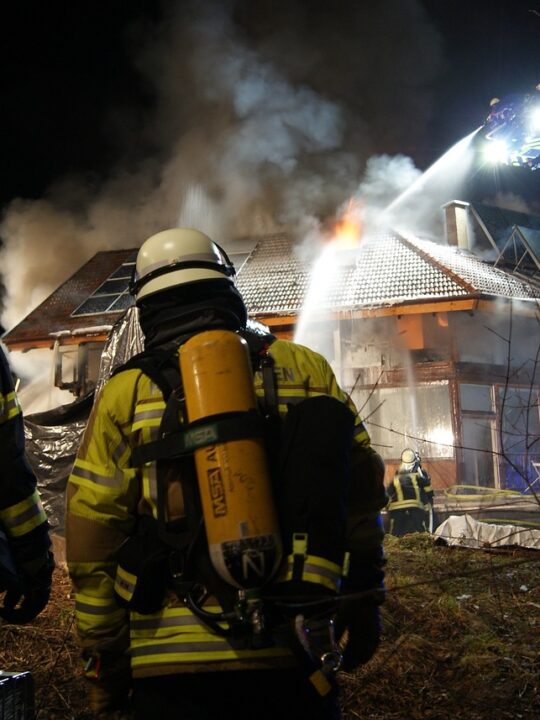Planning to develop or renovate a property? Consider the possibility of underground utility lines first.
In this article, we compiled a list of ways to detect underground utility lines. You should check if you’re dealing with one while planning your property. Learning where to look for them, and how to plan around them is essential.
Want to learn more about underground lines and the techniques for finding them? Keep reading for the full info on utility line detections and the discovery process.
Table of Contents
Visual Inspection
Visual inspection is a detection technique utilized when underground utility lines are present. It gets used to determine the presence, direction, depth, and condition of utilities in an area.
It gets done manually. This can involve digging up sections of the soil to inspect and investigate for the presence of utilities visually. It is a common and reliable method for preliminary investigation.
This combination ensures that the excavated site is safe to work in. Visual inspections are important. This is to plan the safety measures that need to be taken around the worksite.
This can help mitigate the risks of contact with existing utilities. This includes gas and electricity. This can have dangerous consequences.
Magnetic Detection
Magnetic detection is an effective detection technique for underground utility lines. It relies on the use of specialized detectors. It can detect any changes in the natural magnetic field of the ground.
By applying a magnetic field, the device can detect any object. It may come in contact with or disrupt the natural magnetic field. This includes utility lines, such as gas, water, and electricity. These are usually made from metal and can be detected.
This type of detection is generally very fast and easy to use. It is often used for preliminary inspection and mapping of underground facilities. It is useful for detecting and mapping any pipelines, sewers, and cables that are located underground.
Electromagnetic Location Methods
Electromagnetic location methods are a great tool. This is for detecting underground utility lines. This technology uses low-frequency magnetic fields. This is to measure the area around them. It’s used to look for non-metallic objects near them.
This includes underground pipes and utilities. By taking a reading of the ground at different angles and distances, potential underground utility lines can be identified and located.
This detection technique is simple to use and offers a fast, non-invasive way to detect underground utility lines. It is also accurate and cost-effective. This explains why it is becoming increasingly popular.
It’s important to use an experienced technician, who can properly operate the equipment and properly interpret the data, to ensure the best results.
Ground Penetrating Radar (GPR)
Ground Penetrating Radar (GPR) is a detection technique for underground utility lines that is becoming increasingly popular due to its accuracy and efficiency. GPR is used to detect, map, and identify underground objects such as pipes and cables.
This technique works by transmitting electromagnetic energy pulses that penetrate the ground and reflect off the utility lines within. By collecting the reflected waves, a GPR system can create a detailed profile of the underground environment.
The benefit of this method is that it requires very limited disruption to the surface, reducing the cost and time associated with the process. GPR is ideal for both estimating location and depth.
Digging can seriously damage electricity, sewer, communication, gas, and water lines, causing service interruptions, major injuries, and expensive repairs. This is if you don’t have a general idea of where subsurface utilities are located.
Vacuum Excavation
Vacuum excavation is becoming one of the most popular ways to detect the location of underground utility lines. It is a safe, non-destructive, and cost-effective technique that can be used to quickly identify the exact location of lines.
The process will remove a layer of soil and create a “pocket”. When filled with pressurized air to expose the target utility line. It works well in densely packed areas, where traditional digging methods may not be viable.
The technology uses an electronic locator to locate the utilities, then a high-pressure vacuum to extract the soil quickly, so that the exposed line is visible. The vacuum excavation is used to identify other utilities, like pipes, cables, and trenches.
Vacuum excavation provides a reliable and accurate detection solution that is efficient and cost-effective. Remember that you can check vac trucks for sale online for a wider range of selections. Ensure that your equipment is always safe and functional.
Pipe and Cable Locators
Pipes and cable locators are effective tools used. This identifies and detects underground utility lines. The technique involves connecting one end of a transmitter to a buried utility line. Then, use an aerial receiver device to locate the line.
The transmitter emits radio frequencies, allowing the receiver utility line detection, its depth, and its condition. The device not only locates PVC and plastic power cable networks.
It also locates:
- pipelines
- water mains
- gas lines
- telephone cables
- other underground movements
It is also possible to vary the frequency of the transmitted signals. This is to differentiate them from other types of signals which the receiver might detect. This technique stands above other traditional techniques for cable and pipe detection. This involves sonar, radar, metal detection, scanning, and X-ray technologies.
Learn the Detection Techniques for Underground Utility Lines Today
Underground utilities present many unique challenges for utility companies. This is to effectively detect and identify potential problems before damage to the system occurs. Today’s detection tools are quickly advancing.
Newer technologies are being used to more effectively and efficiently detect any underground utility lines.
So, stay informed regarding the latest detection techniques and advancements. Ensure the safety and reliability of their utility lines.
Did you find this article helpful? Check out the rest of our blogs!







